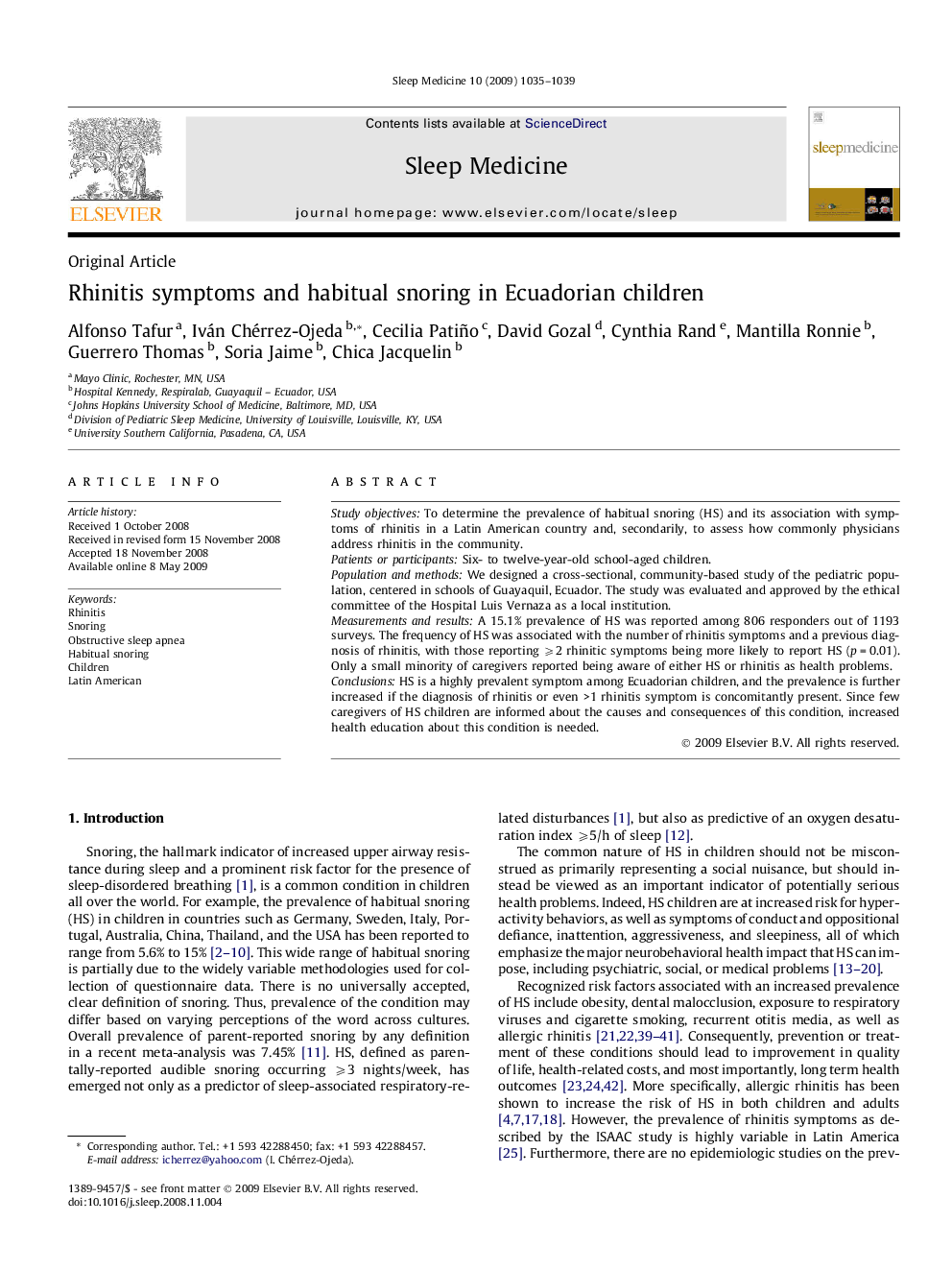| Article ID | Journal | Published Year | Pages | File Type |
|---|---|---|---|---|
| 3177273 | Sleep Medicine | 2009 | 5 Pages |
Study objectivesTo determine the prevalence of habitual snoring (HS) and its association with symptoms of rhinitis in a Latin American country and, secondarily, to assess how commonly physicians address rhinitis in the community.Patients or participantsSix- to twelve-year-old school-aged children.Population and methodsWe designed a cross-sectional, community-based study of the pediatric population, centered in schools of Guayaquil, Ecuador. The study was evaluated and approved by the ethical committee of the Hospital Luis Vernaza as a local institution.Measurements and resultsA 15.1% prevalence of HS was reported among 806 responders out of 1193 surveys. The frequency of HS was associated with the number of rhinitis symptoms and a previous diagnosis of rhinitis, with those reporting ⩾2 rhinitic symptoms being more likely to report HS (p = 0.01). Only a small minority of caregivers reported being aware of either HS or rhinitis as health problems.ConclusionsHS is a highly prevalent symptom among Ecuadorian children, and the prevalence is further increased if the diagnosis of rhinitis or even >1 rhinitis symptom is concomitantly present. Since few caregivers of HS children are informed about the causes and consequences of this condition, increased health education about this condition is needed.
